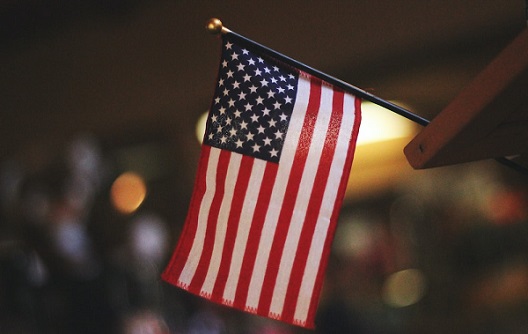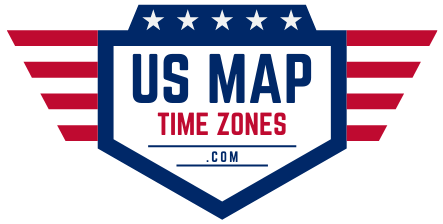About the United States
The United States is a federal nation of 50 states that covers the central part of North America. Today we will tell you About the United States.
The continental United States borders the Atlantic Ocean to the east and the Pacific Ocean to the west.
The country borders Canada to the north and has a 3,155 km border with Mexico to the south. The United States shares maritime borders with the Bahamas, Cuba, and Russia (in Alaska).
The United States covers an area of 9,833,516 km², making it the third largest country in the world. By comparison, it is more than twice the size of the European Union or just over half the size of Russia.
The most populous country in the Americas is home to more than 330 million people (in 2020). Washington, DC’s capital city; its largest city is New York. The spoken languages are English 80% and Spanish 13%.
The map shows the contiguous United States with 48 US states, state capitals, major cities, interstate highways, railroads, and the locations of the busiest US airports.
Map of the contiguous United States
The map shows contiguous USA (lower 48) and neighboring countries with international borders, national capital Washington DC, US states, US state borders, and significant airports.
You can use the above map for educational and similar purposes; if you publish it online or in print, you must credit the One World – Nations Online Project as the source.
Geography
The United States sits on the North American Plate, a tectonic plate that borders the Pacific Plate to the west.
In addition to many other definitions, the US can generally be divided into five main geographic areas:
Northeast, Southwest, West, Southeast and Midwest.
Northeast
The Northeast borders Canada on the north and borders the Atlantic Ocean on the west. The region offers a rugged interior with several rivers; its landscape comprises the Appalachian valleys and mountains.
Half of Lake Ontario and a portion of Lake Erie belong to the Northeast region. Within the Northeast are the states of New England and the land areas of New York and Pennsylvania.
It is the country’s most economically developed, densely populated and culturally diverse region.
South-west
Although definitions of the region’s boundaries vary, Arizona, New Mexico, Texas, and Oklahoma are the central states of the southwestern United States. The area’s main features are the Mojave, Sonora, and Chihuahua deserts.
The Colorado Plateau in the northwest of the area is a high-altitude desert region with scattered forests along the Colorado River and is notable for its scenery.
West
Nine states are considered to be part of the western United States. The Rocky Mountains dominate the mountain states of Montana, Wyoming, Colorado, Idaho, Utah, and Nevada.
The Pacific states are Washington, Oregon, and California; all have a coastline on the Pacific Ocean. The central mountain ranges are the Sierra Nevada, the Cascades, and the Pacific Coast Ranges.
Southeast
The Southeast, also known as the Southeastern United States, refers to the southern, eastern part of the United States and includes Alabama, Arkansas, Florida, Georgia, Kentucky, Louisiana, Mississippi, the Carolinas, Tennessee, Virginia, and West Virginia.
Central Lowland covers much of Arkansas and Louisiana. The low-lying land adjacent to the Gulf of Mexico and the Atlantic Ocean is known as the Coastal Plains. It characterizes the topography of the coastal states of the Southeast region.
The southern part of the Appalachian Mountains brings a bit of variety to the landscape of Kentucky, Virginia, Tennessee, and North Carolina.
Midwest
The Midwest is the north-central part of the United States. A dozen states belong to the Midwest, Illinois, Indiana, Iowa, Kansas, Michigan, Minnesota, Missouri, Nebraska, North Dakota, Ohio, South Dakota and Wisconsin.
Mountains
The landscape of western North America features a series of mountain ranges. Alaska’s two main mountain ranges are the Brooks Range and the Alaska Range.
Most mountains in the continental United States are in the west, such as the Rocky Mountains, the Cascade Range, and the Sierra Nevada.
Between the Great Plains and the Coastal Plains are the folded and overlapping rock complexes of the Appalachian Mountains, which stretch for 2,400 km from the Long Range Mountains on the west coast of the Canadian island of Newfoundland to northern Newfoundland.
The USA from Alabama The Appalachian Mountains are the remnants of alpine-sized mountain ranges from millions of years after the retreat of glaciers during the last ice age. Mount Mitchell (2,037 m) in the US state of North Carolina is the highest peak in the Appalachian chain.
The ten tallest mountains in the US are all in Alaska, the tallest of which is Mount Denali (6,190m). The highest peaks in the contiguous United States are in the western part of the country; Mount Whitney (4,421 m) in California is the highest. (About the United States)
Other notable American mountains include Mount Elbert (4,401 m) in Colorado, Mount Rainier (4,392 m) in Washington State, Mount Shasta (4,322 m) in California, Grand Teton (4,199 m) south of Yellowstone National Park in Wyoming, and Mount Mitchell (2,037 m), which is the highest peak in the Appalachian Mountains and the highest mountain in the eastern US.rivers
Rivers were important transportation routes in the New World; they were the key to colonizing the United States.
And even today, the country’s river systems remain vital shipping lanes for transporting coal, agricultural products, and manufactured goods.
The nation’s inland waterway network consists of the major navigable rivers and connecting tributaries, several major canals, locks, and gate systems. (About the United States)
Major Rivers of the United States
The 3,781 km long Mississippi River rises in Minnesota near the Canadian border and flows south to a delta in Louisiana on the Gulf of Mexico.
With a length of more than 4,000 km (including the Red Rock River), Missouri is one of the essential waterways in the central United States and the longest river in the country. It is a major tributary of the Mississippi.
The source Yukon is located in the northwestern corner of British Columbia in the Canadian subarctic.
The roughly 2,000-mile-long river flows west through central Alaska and ends in a vast delta in southwestern Alaska, where the Yukon and Kuskokwim Rivers empty into the Bering Sea.
The 3,051 km long Rio Grande (meaning Big River) has its source in the Rocky Mountains in southwestern Colorado and empties into the Gulf of Mexico. The river forms the border between Texas and Mexico. (About the United States)
The Colorado River (Spanish for red color) is 2,333 km long; it is the largest and most important river in the southwestern United States.
The river has its source in the Rocky Mountains in northern Colorado and flows southwest, where it formed the Grand Canyon over millions of years. Further downstream, the river defines the Arizona-Nevada and Arizona-California state lines.
Along the main course of the river are eleven US National Parks and at least five large dams that reduce the creek’s water to a trickle when it reaches Mexico, where it empties into the Gulf of California.
The 1,400-mile-long Arkansas River runs from the Rocky Mountains in Colorado’s Lake County to join the Mississippi River in Arkansas. Some sections of the river are famous for whitewater rafting.
The largest river in the Pacific Northwest is the Columbia River; it has its headwaters in British Columbia, Canada, and flows first south into Washington State, US, and then west to empty into the Pacific Ocean south of Seattle.
The Red River (of the South), more than 1,800 km long, was another important tributary of the Mississippi; today, it feeds the Atchafalaya River, an estuary of the Mississippi.
The Snake River rises in the continental basin of Yellowstone National Park and then flows south through Grand Teton National Park in Wyoming. The Snake River is about 1,700 km long and is the largest tributary of the Columbia River. (About the United States)
Population
The United States of America has a racially and ethnically diverse population. According to the US Census Bureau, there are 60.1% non-Hispanic White Americans, 18.5% Hispanic and Latino (of any race), 13.4% Black or African American, 5 .9% Asian, 1.3% American Indian and Alaska Native.
More than 80% of Americans live in urban areas. More than 300 cities in the US have more than 100,000 people, and there are 54 metropolitan areas with a population of more than one million people.
The most significant metropolitan areas are New York City (20.1 million), Los Angeles (13.3 million), Chicago (9.5 million), Dallas (7.2 million), Houston (6.7 million), Washington, DC (6.1 million) and Philadelphia (6 million). (About the United States)
Busiest airports in the US
The map also shows the location of the major airports in the United States.
The busiest airports in the United States are:
- Hartsfield–Jackson Atlanta International Airport, Atlanta, GA (IATA: ATL)
- Los Angeles International Airport, Los Angeles, CA (IATA: LAX)
- O’Hare International Airport, Chicago, IL (IATA: ORD)
- Dallas/Fort Worth International Airport, Dallas, TX (IATA: DFW)
- Denver International Airport, Denver, CO (IATA: DEN)
We hope you like our article on About the United States.
Thanks for visiting US Map Time Zones
If u have any query, you can ask in comment section. Thanks


